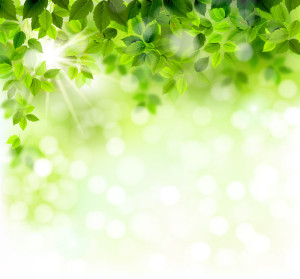Inspiring Students Through Their Senses With an Herb Garden Label
 Gardens are springing up all over the country in backyards and schoolyards. Hobbyists, cooks and educators are pushing seeds into the soft earth and gently patting nutritious soil around roots. Many schools are planning their outdoor classrooms, gardens that will be planted during the spring school year, tended over the summer and harvested during the following school year in late summer. One joy of herbs in the classroom is that they can be harvested all throughout the growing season. They may be the first plant children can harvest and the first one they can research with the help of an herb garden label.
Gardens are springing up all over the country in backyards and schoolyards. Hobbyists, cooks and educators are pushing seeds into the soft earth and gently patting nutritious soil around roots. Many schools are planning their outdoor classrooms, gardens that will be planted during the spring school year, tended over the summer and harvested during the following school year in late summer. One joy of herbs in the classroom is that they can be harvested all throughout the growing season. They may be the first plant children can harvest and the first one they can research with the help of an herb garden label.
By labeling herbs, the students see the unique scientific differences between the plants. Not all green leaves are created equally. They see different leaf characteristics—shapes, texture, scent, edges and size. When a plant has a name it has an identity. Just like Brayden is different from Brian in your classroom, Rosemary and Lavender are different in your garden.
An herb garden label helps expand vocabulary, language and research. How did Sage get its name? Herbs have interesting histories of their medicinal and culinary uses over the centuries. An herb garden label might inspire students to research how these herbs got their interesting names. Students will learn name origins, definitions and history as they go through herb garden label after label.
Comparing and contrasting the herbs can be great fun when the students find out how some herbs were used to heal Civil War soldiers and others cured snakebite. You can even have a school cook-off using the herbs and other produce grown in your garden. Describing the radically different flavors and scents of herbs helps a child’s vocabulary grow.
Your school, classroom or homeschool herb garden can be a various assortment of aromatic and tasty fragrances or it can be based on a theme. The National Gardening Association suggests some kid-friendly garden themes if you’re just starting an herb garden. You might plant herbs like rosemary, hyssop and tansy if you’ve been reading Peter Rabbit stories. Oregano, basil, garlic and parsley make for a great pizza or spaghetti garden. You can pretend to be the first colonists who picked thyme and savory to add to their feasts. You can also whip up some refreshments like peppermint, chamomile or lemon balm tea.
Kincaid Plant Markers can be your partner in education as our plant labels help your students learn research skills combined with the life skills of cultivating foods, healthy eating practices and cooking. An herb garden label will help differentiate between plants and can produce a savory appetite for learning more about the amazing ways plants have been able to heal wounds, save lives, inspire love and poetry, change a person’s behavior, improve a person’s beauty and satisfy the taste buds of humans over the centuries.
